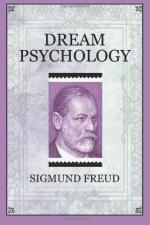Other constellations for the dream formation would result if the foreconscious train of thought had from the beginning been connected with the unconscious wish, and for that reason met with rejection by the dominating end-occupation; or if an unconscious wish were made active for other—possibly somatic—reasons and of its own accord sought a transference to the psychic remnants not occupied by the Forec. All three cases finally combine in one issue, so that there is established in the foreconscious a stream of thought which, having been abandoned by the foreconscious occupation, receives occupation from the unconscious wish.
The stream of thought is henceforth subjected to a series of transformations which we no longer recognize as normal psychic processes and which give us a surprising result, viz. a psychopathological formation. Let us emphasize and group the same.
1. The intensities of the individual ideas become capable of discharge in their entirety, and, proceeding from one conception to the other, they thus form single presentations endowed with marked intensity. Through the repeated recurrence of this process the intensity of an entire train of ideas may ultimately be gathered in a single presentation element. This is the principle of compression or condensation. It is condensation that is mainly responsible for the strange impression of the dream, for we know of nothing analogous to it in the normal psychic life accessible to consciousness. We find here, also, presentations which possess great psychic significance as junctions or as end-results of whole chains of thought; but this validity does not manifest itself in any character conspicuous enough for internal perception; hence, what has been presented in it does not become in any way more intensive. In the process of condensation the entire psychic connection becomes transformed into the intensity of the presentation content. It is the same as in a book where we space or print in heavy type any word upon which particular stress is laid for the understanding of the text. In speech the same word would be pronounced loudly and deliberately and with emphasis. The first comparison leads us at once to an example taken from the chapter on “The Dream-Work” (trimethylamine in the dream of Irma’s injection). Historians of art call our attention to the fact that the most




